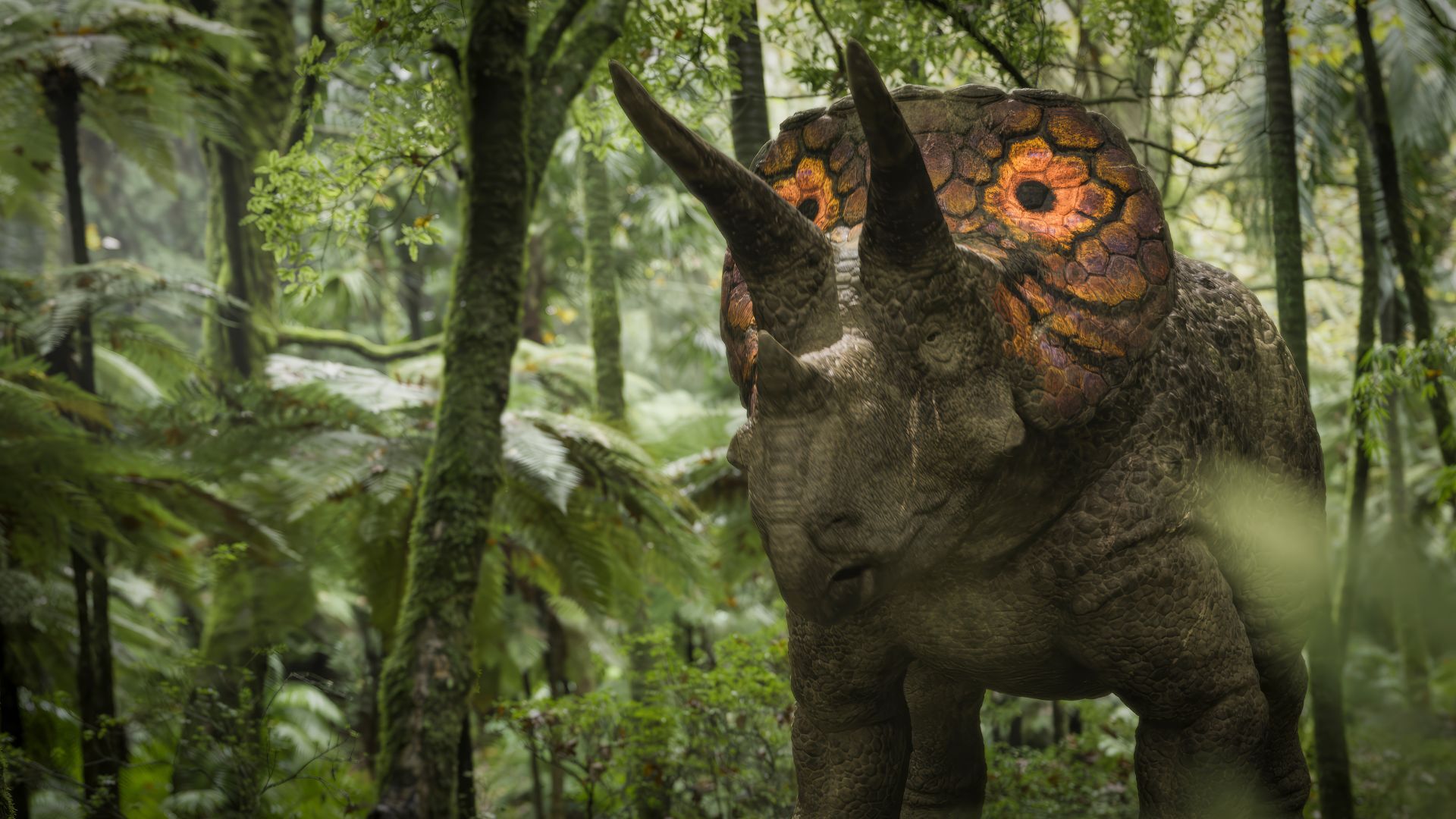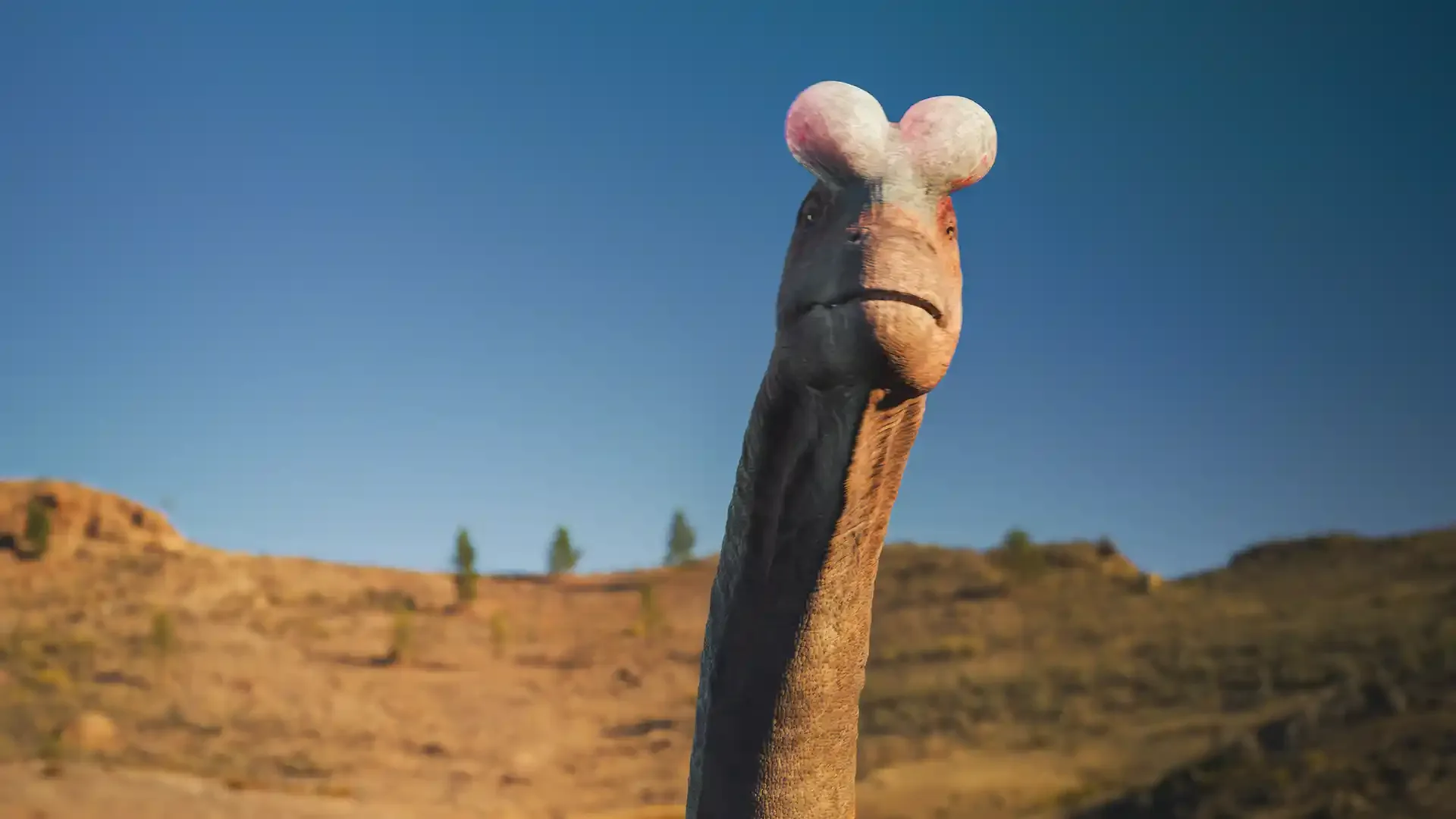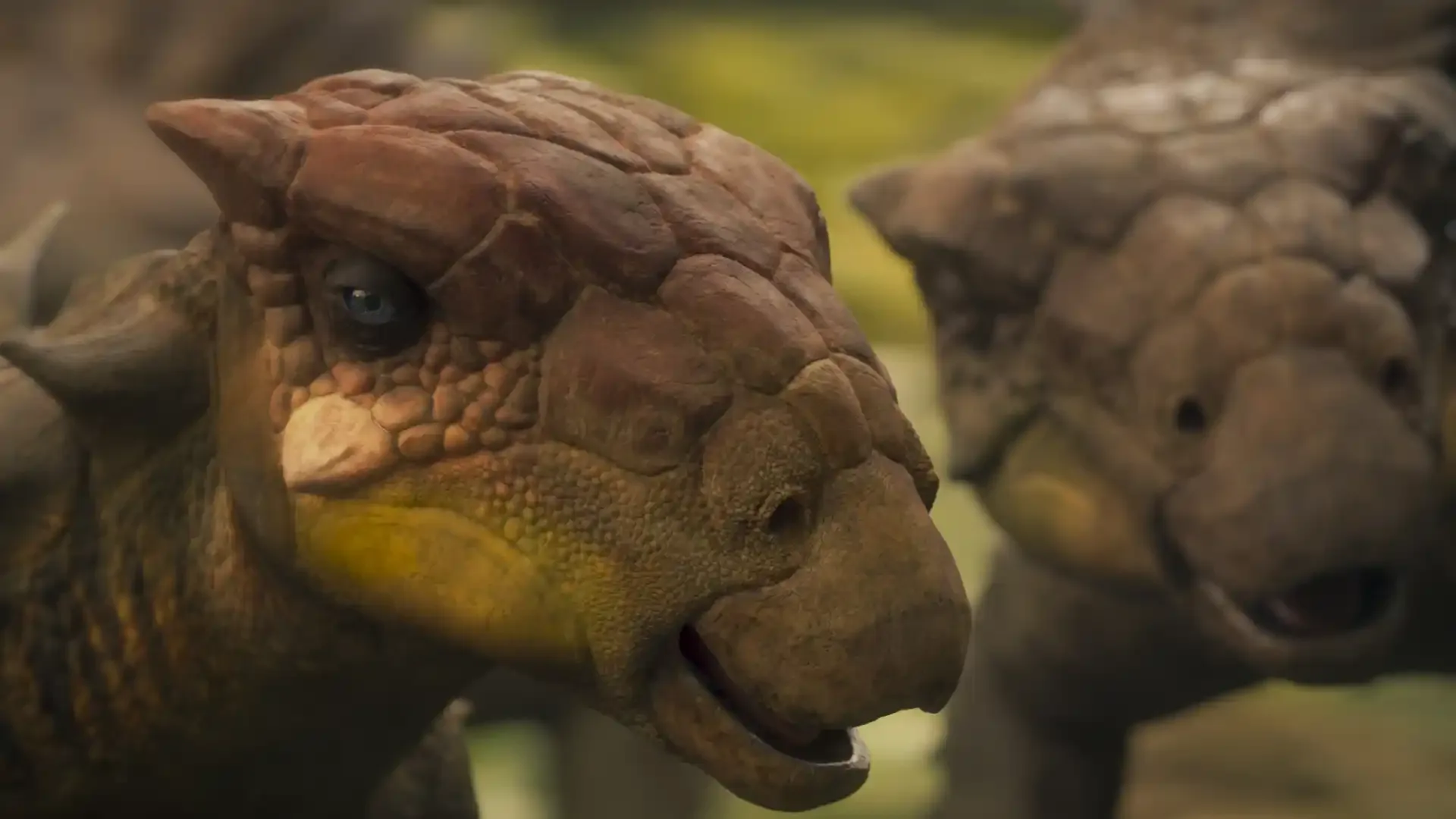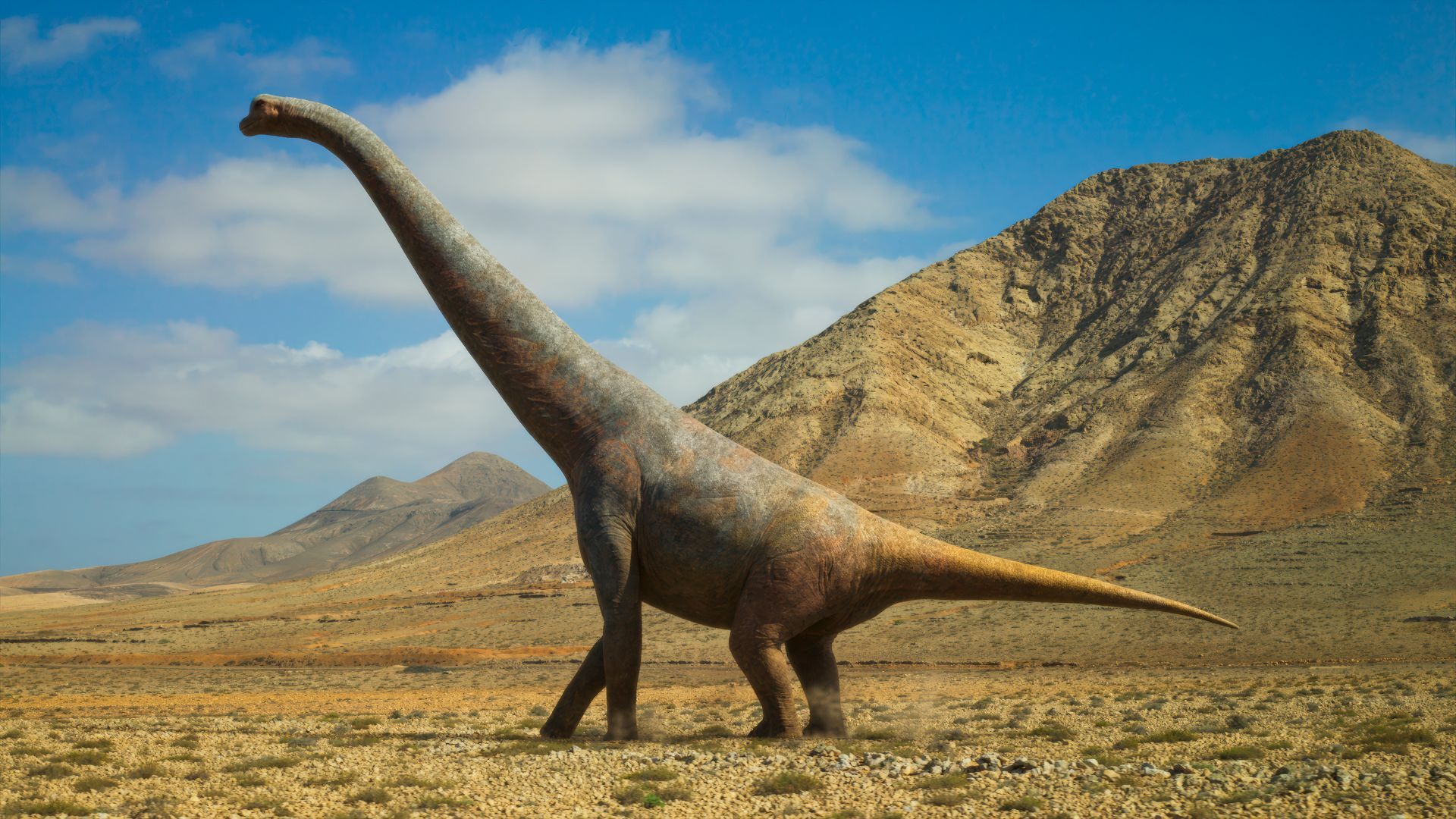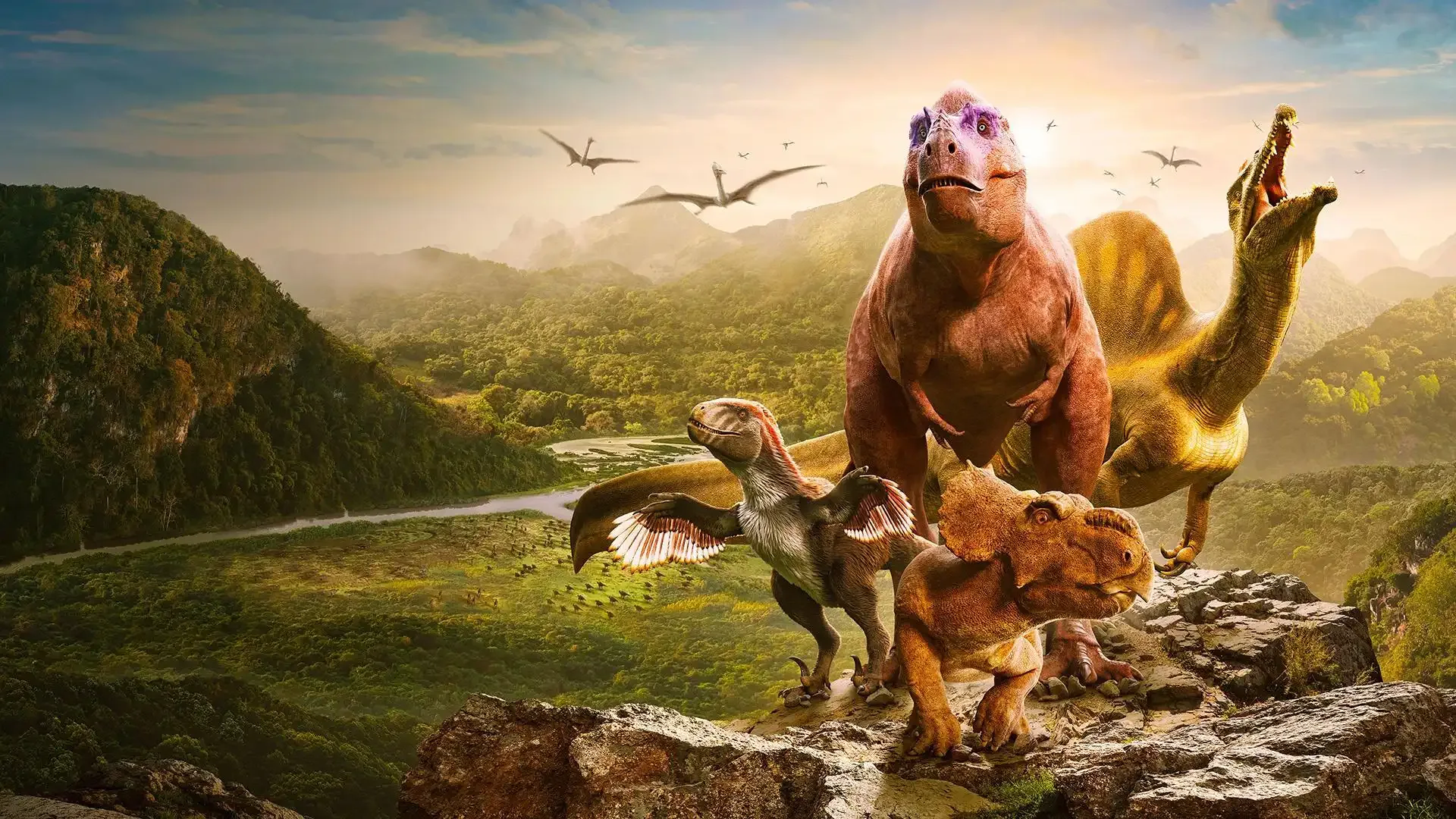After millions of years, six incredible dinosaurs are coming back to life. In “Walking with Dinosaurs” on PBS, paleontologists discover the lives behind the fossils, using the latest scientific methods to uncover stories of survival, triumph, family and even romance. Get the stats on your favorite giants to see how they stack up on this prehistoric stage.
About Triceratops
Built like a living shield, Triceratops was ready to face some of the fiercest predators in the Cretaceous, including the infamous Tyrannosaurus Rex. But even the best defenses didn’t make life a walk in the park.
- Period: Cretaceous (66 million years ago)
- Location: North America
- Diet: Herbivore
- Behavior: Likely solitary
- Threats: T. Rex … sometimes

How Big Was Triceratops?
Triceratops was the largest species of horned dinosaurs. Its large size and well-armored body made it a tank-like animal in a world where Tyrannosaurus Rex was always waiting around the corner.
Support your local PBS station in our mission to inspire, enrich, and educate.
Highlights
Scientists believe Triceratops evolved alongside T. Rex, becoming the ultimate defender while its towering enemy became the ultimate predator. That’s because the Triceratops was huge and heavy, with 3-foot-long horns over its eyes and a giant bony frill for a headdress. It could even flush blood into the frill to make colorful “eye spots” that might have helped intimidate challengers.
Paleontologists have also found exceptionally preserved fossils showing massive, knobby scales, some as large as the palm of your hand. For an unlucky T. Rex, taking a bite out of this dino would have been like trying to gnaw a rock.
These defenses made Triceratops one of the most successful dinosaur species of all time. In fact, at the dig site in this episode of “Walking with Dinosaurs,” 40% of all the discovered fossils belonged to Triceratops. This suggests that the species may have dominated the Cretaceous period.
However, this doesn’t mean every Triceratops was immune to the dangers of the prehistoric neighborhood. While paleontologists have found that most fossils belong to adults, they discovered one set of remains with hardly used teeth and short arm bones. They used this information to estimate that the dinosaur was three years old — just a baby and likely more vulnerable to predators.

The best of PBS, straight to your inbox.
Be the first to know about what to watch, exclusive previews, and updates from PBS.
Fun Facts about Triceratops
- Triceratops babies needed to gain a lot of weight every year — 1 ton or over 2,200 lbs — to reach their full-grown weight of 8.8 tons.
- Triceratops was as heavy as a full-grown African elephant!
- The social habits of the Triceratops are still a mystery. Experts have found most fossils alone, but sometimes in small groups, suggesting that Triceratops may have formed small family packs but were otherwise solitary.
Walking with Dinosaurs
